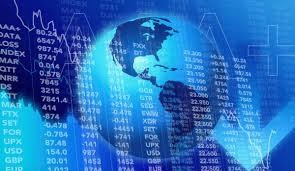Developments in the global ecomomy
Written and accurate as at: Aug 10, 2018 Current Stats & Facts

Australia
Consumer price increases remain relatively subdued with overall prices increasing 0.4% in the June quarter to be 2.1% higher than a year earlier. There were large increases in Health (+1.9%), Alcohol and Tobacco (+1.6%) and Transport (+1.6%) in the quarter, but these were offset by falls in Communications (-1.3%), Food (-0.4%) and Recreation and Culture (-0.4%). Producer prices are similarly subdued increasing by 0.3% in the quarter and 1.5% for the year suggesting there is little price pressure in the pipeline. Labour force data showed a 50,900 increase in employed persons but the unemployment rate was unchanged at 5.4% in June. Indicators of residential construction including building approvals and housing finance suggest activity in this area will ease off, although approvals bounced back in June following a very weak May result. At this stage, there is little to suggest the Reserve Bank will see the need to tighten monetary policy despite the recent stronger than expected GDP growth figures.
US
US non-farm payrolls increased by 213,000 in June following a 244,000 rise in the previous month. However, an increase in the participation rate saw the unemployment rate rise to 4.0% from 3.8% in May. Of greater interest with respect to the pace of the Fed’s monetary tightening program was the relatively subdued 0.2% rise in average hourly earnings which translates to a 2.7% rise in earnings over the past 12 months. Core inflation is also continuing its slow grind higher with prices excluding volatile items such as food and energy increasing by 2.3% over the past 12 months. This compares to the 2.1% inflation rate three months ago and 1.7% 12 months ago. Activity data continues to be robust with the advance GDP results for the June quarter showing an annualised 4.1% increase.
Europe
Positive sentiment at the start of the year has increasingly given way to a more pessimistic attitude. The ZEW Indicator of Economic Sentiment fell to -18.6 in July, the lowest level since August 2012. The poor reading reflects the fact that more than 30% of analysts believe economic activity will deteriorate over the next six months. Other surveys such as the PMI have also deteriorated since the start of the year but have settled at a level suggesting the European manufacturing will continue to expand, albeit at a slower pace. While inflation is now running around 2%, this partly reflects higher oil prices. Excluding volatile items such as energy and food, inflation is closer to 1%. At its July meeting, the European Central Bank again flagged that official rates would likely remain unchanged into 2019 and that while asset purchases would continue they would start to be wound down after September 2018.
China
Chinese real GDP increased by 6.7% in the year to June, a touch softer than the recent 6.8% growth rate. While some have pointed to the trade war it is probably too early to see any specific impact on the economy, although it may be influencing investment decisions. Export growth was virtually unchanged in June, growing by 11.3% from a year earlier compared to the 12.6% gain in May. Consumer prices fell 0.1% in June to be 1.9% above year ago levels.
Japan
Despite speculation the Bank of Japan would move away from its easy monetary policy rhetoric, the last quarterly Outlook Report was consistent in positioning for an extended period of low interest rates. This likely reflects some easing in growth indicators from earlier in the year, concerns around the impact of consumption tax increases due in 2019 and still low inflation.










